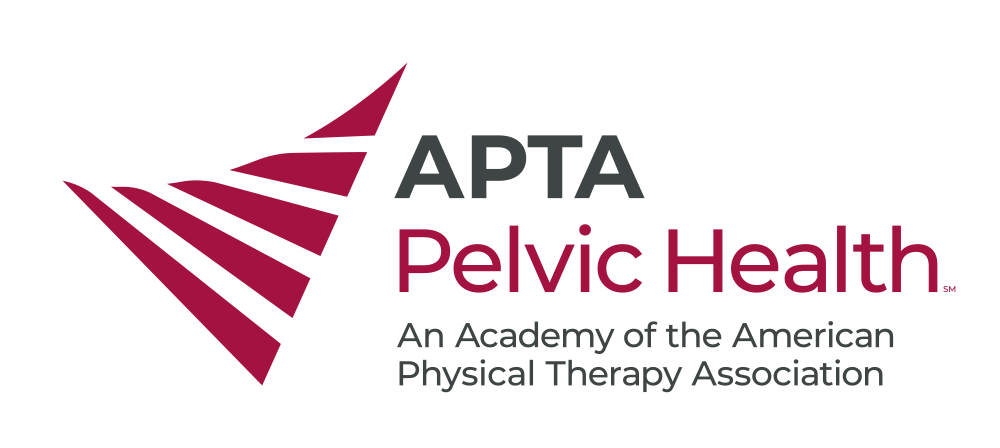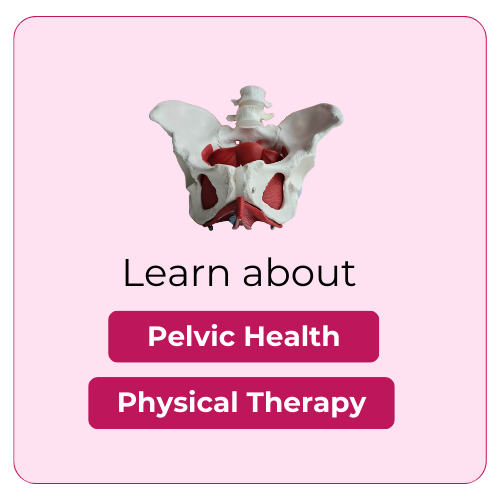Why Diaphragmatic Breathing is One of the Best Exercises Pelvic Health Therapists Can Give Patients
As a physical therapy student, I have been exposed to numerous therapeutic exercises throughout my clinical rotations, didactic lectures, and shadowing experiences. I have mentally collected these exercises in my “intervention toolkit” to pull out for specific musculoskeletal impairments like quadriceps weakness or rotator cuff instability. But through my various opportunities observing pelvic physical therapists, listening to pelvic health lectures at the APTA Combined Sections Meeting, and attending APTA Pelvic Health Level 1 courses, I found no exercise to be quite as revered as diaphragmatic breathing. I once heard a pelvic therapist say she could speak about it for an hour. So, let’s get into the details.
What is diaphragmatic breathing, and what’s all the hype about?
Diaphragmatic breathing, also known as belly breathing, is an extremely effective and simple exercise with a multitude of benefits for your pelvic floor, mental health, cardiopulmonary system, and core stability. It involves taking deep breaths by engaging the diaphragm, the dome-shaped muscle located in the upper abdomen just below the ribs. As the diaphragm contracts, it descends, creating a pressure gradient that enables our lungs to fill with air. When we exhale, the diaphragm relaxes and returns to its original position. Using our diaphragm enables us to inhale more deeply and slowly.
However, we often find ourselves taking shallow breaths into our chest rather than our abdomen. This causes accessory muscles like the upper trapezius, pectoralis minor, and scalene muscles to work overtime trying to lift the rib cage in order to let air in, causing muscle tightness in the chest and neck. Breathing through the diaphragm instead can prevent this tightness and unnecessary muscle activation. It also enables patients to take larger breaths, improves oxygen saturation, and lowers heart rate and blood pressure. In addition, diaphragmatic breathing has important benefits for patients with pelvic floor issues.
Why should we prescribe it to patients?
Diaphragmatic breathing can help manage pelvic floor dysfunction
The diaphragm and the pelvic floor work together to control pressure within the abdomen. As the diaphragm contracts during inhale, the pelvic floor relaxes. As we exhale, the diaphragm relaxes while the pelvic floor contracts. Because of this relationship, breathing through our diaphragm can enhance awareness of our pelvic floor muscles. This is particularly useful for patients learning to connect to, activate, and relax their pelvic floor to manage pelvic floor dysfunction. For example, Toprak (2021) demonstrated that diaphragmatic breathing can improve quality of life and reduce symptoms for patients with urge urinary incontinence.
Diaphragmatic breathing can help relieve stress
Studies show that diaphragmatic breathing can reduce stress, lower anxiety, and facilitate relaxation. Breathing through the diaphragm stimulates our vagus nerve, activating the parasympathetic nervous system response that tells our body to “rest and digest.” Finding ways to manage stress and anxiety is critical for patients with pelvic floor dysfunction. Often our patients have experienced chronic pain, trauma, barriers to accessing healthcare, shame regarding their symptoms, and uncertainty about whether their symptoms can be relieved. Diaphragmatic breathing is a powerful tool we can use to help our patients cope with the stress and anxiety surrounding their pelvic floor issues.
Diaphragmatic breathing can build core stability and improve balance
Diaphragmatic breathing is hypothesized to improve proprioception to the core and help activate trunk musculature. Because it helps manage intra-abdominal pressure, the diaphragm provides the postural support necessary for dynamic movements. Stephens (2017) also demonstrated that diaphragmatic breathing can improve balance. Trunk stabilization and balance are particularly important for patients with pelvic floor dysfunction, as many of them experience low back pain. Strengthening the diaphragm through belly breathing can therefore play an important role in helping our patients build postural stability and core strength.
How can I teach my patients to perform diaphragmatic breathing?
Diaphragmatic breathing can be performed in any position, but it is easiest to practice while lying on your back with knees bent. Start by placing one hand on your abdomen and the other hand on your chest. As you inhale through your nose, allow your belly to expand, breathing in for three to four seconds. At the same time, relax your pelvic floor, enabling your belly to fill with air. Throughout the inhale, you should feel the hand resting on your abdomen rising, while the hand on your chest stays in place. When you breathe out, exhale slowly for three to four seconds, allowing your abdomen to relax and your pelvic floor muscles to contract.
Teaching diaphragmatic breathing to our patients is one way that we can meaningfully impact their pelvic health. This technique is easy to perform and helps patients connect to their pelvic floor, improve postural stability, and find stress relief. For these reasons, I will continue to pull diaphragmatic breathing out of my exercise toolkit.
I am honored to receive this month’s APTA Pelvic Health Scholarship, and I am so grateful for the opportunity to expand my pelvic health knowledge. I am enthusiastic about serving this population and am eager to equip patients with strategies and skills they can pull out of their toolkit to confidently manage their pelvic health.
References:
Chen YF, Huang XY, Chien CH, Cheng JF. The Effectiveness of Diaphragmatic Breathing Relaxation Training for Reducing Anxiety. Perspect Psychiatr Care. 2017;53(4):329-336. doi:10.1111/ppc.12184
Cozean N. Diaphragmatic breathing for pelvic health. Pelvic Sanity. Published December 26, 2021. https://www.pelvicsanity.com/post/diaphragmatic-breathing-for-pelvic-health
Hopper SI, Murray SL, Ferrara LR, Singleton JK. Effectiveness of diaphragmatic breathing for reducing physiological and psychological stress in adults: a quantitative systematic review. JBI Database System Rev Implement Rep. 2019;17(9):1855-1876. doi:10.11124/JBISRIR-2017-003848
Liu H, Wiedman CM, Lovelace-Chandler V, Gong S, Salem Y. Deep Diaphragmatic Breathing-Anatomical and Biomechanical Consideration [published online ahead of print, 2023 Feb 3]. J Holist Nurs. 2023;8980101221149866. doi:10.1177/08980101221149866
Ma X, Yue ZQ, Gong ZQ, et al. The Effect of Diaphragmatic Breathing on Attention, Negative Affect and Stress in Healthy Adults. Front Psychol. 2017;8:874. Published 2017 Jun 6. doi:10.3389/fpsyg.2017.00874
Massery M. Multisystem Consequences of Impaired Breathing Mechanics and/or Postural Control. In: Frownfelter D, Dean E, editors. Cardiovascular and Pulmonary Physical Therapy Evidence and Practice. 4th ed. St. Louis, MO: Elsevier Health Sciences; 2006.
Rawlins. The 1 Exercise for the Pelvic Floor that Everyone Should Do (Not a Kegel) | Origin. Published November 9, 2021. https://www.theoriginway.com/blog/the-1-pelvic-floor-exercise-everyone-should-do-not-a-kegel
Ruth Health. A guide to diaphragmatic breathing and pelvic floor therapy - Ruth Health. Ruth Health. Published December 6, 2022. https://ruthhealth.com/a-guide-to-diaphragmatic-breathing-and-pelvic-floor-therapy/
Stephens RJ, Haas M, Moore WL 3rd, Emmil JR, Sipress JA, Williams A. Effects of Diaphragmatic Breathing Patterns on Balance: A Preliminary Clinical Trial. J Manipulative Physiol Ther. 2017;40(3):169-175. doi:10.1016/j.jmpt.2017.01.005
Toprak N, Sen S, Varhan B. The role of diaphragmatic breathing exercise on urinary incontinence treatment: A pilot study. J Bodyw Mov Ther. 2022;29:146-153. doi:10.1016/j.jbmt.2021.10.002

Author: Hanna Newstadt, SPT
Author Bio: Hanna grew up in Louisville, Kentucky and is currently pursuing her Doctorate of Physical Therapy at Drexel University in Philadelphia. Though she originally studied and worked in chemical and environmental engineering, Hanna changed course so she could pursue a career in which she could meaningfully impact people's lives through movement. Hanna is passionate about helping people improve their physical function and enhance their quality of life. In her free time, she likes to cook, hike, and ride her bike.
Thank You to Our 2023 Fall Symposium Sponsor, SRC Health!



